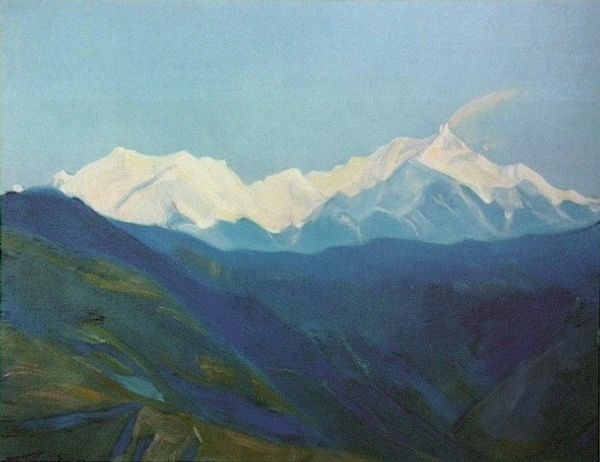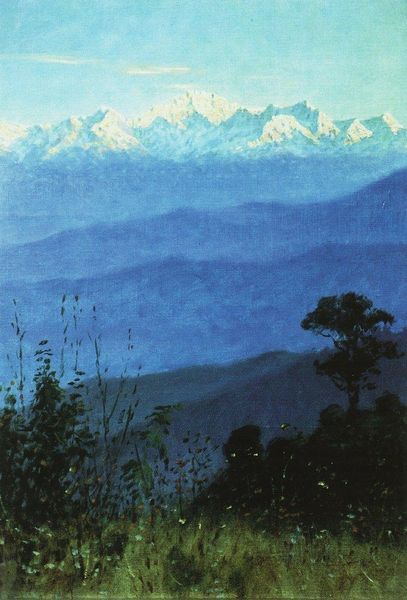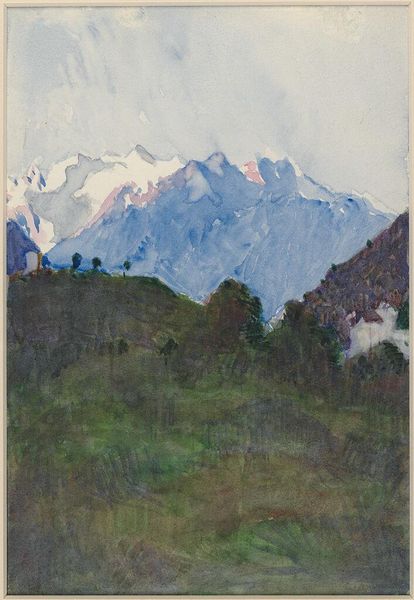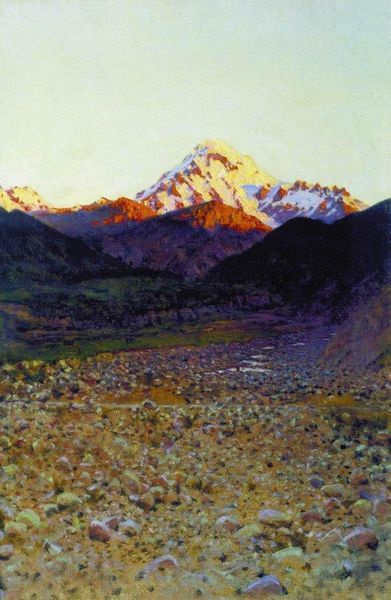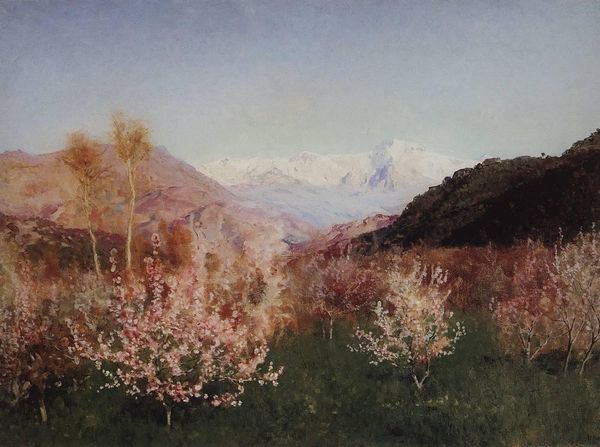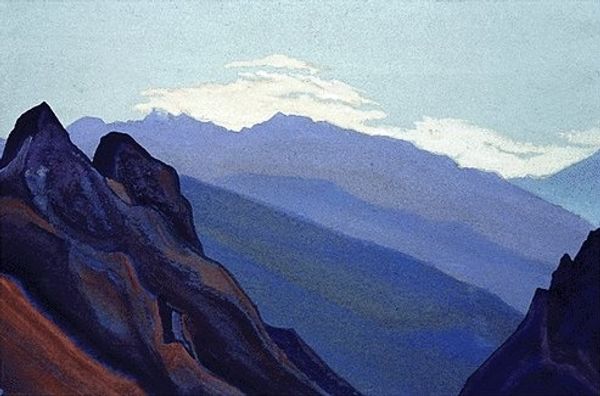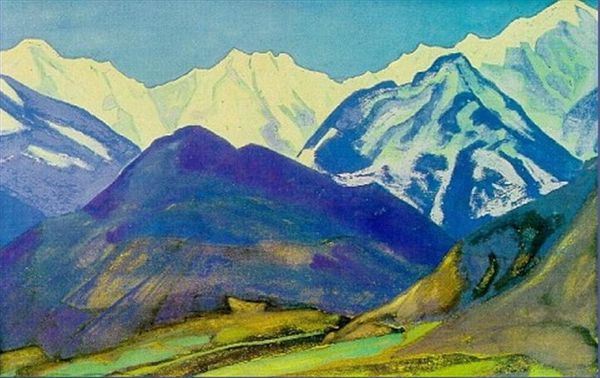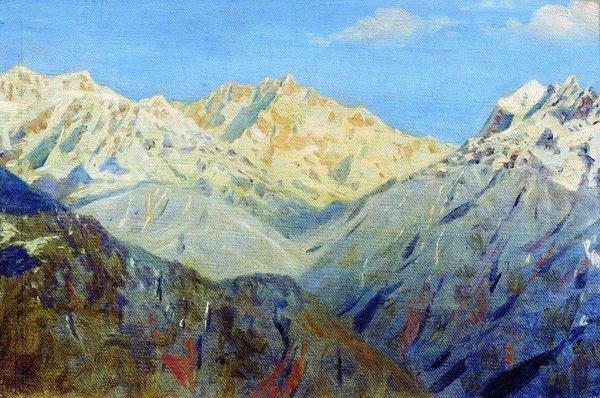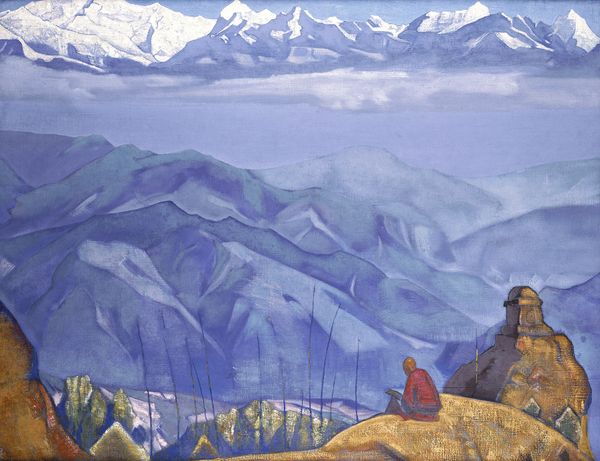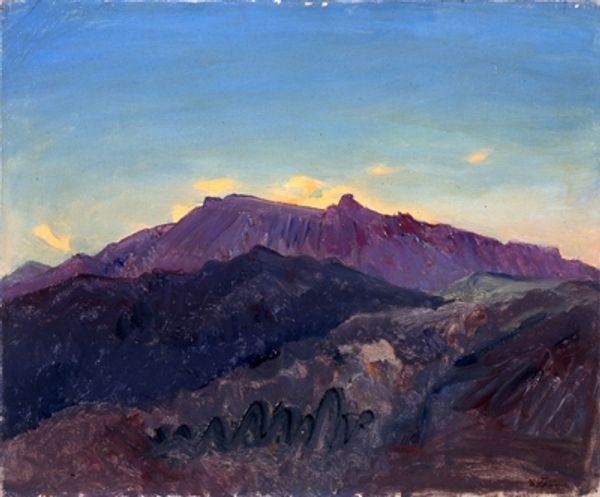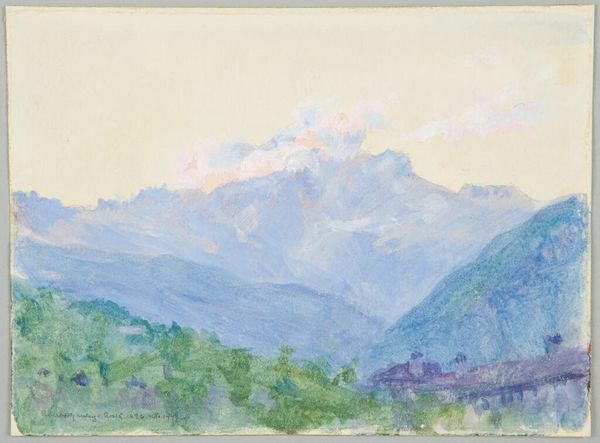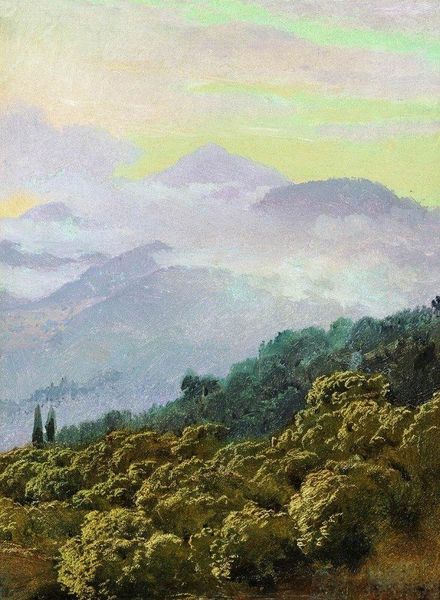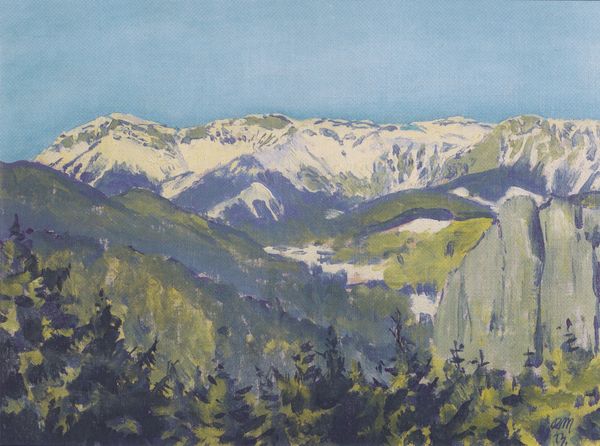
Copyright: Public Domain: Artvee
Editor: So, here we have Vasily Vereshchagin's "Sunset In The Himalayas" from 1879, rendered in oil paint. I'm struck by how earthly and almost tactile the foreground feels against the ethereal, distant mountains. What captures your attention in this landscape? Curator: I see the hand of labor very clearly. This wasn't just about capturing a romantic vista. Consider the physicality of plein-air painting at this altitude and in this time period. Think about the labor involved in preparing the canvas, grinding pigments, transporting materials. This process connects us to Vereshchagin's specific, embodied experience, blurring any high/low art separation, doesn’t it? Editor: Absolutely. The romantic landscape genre often obscures the physical act of creation. You're making me think about how Vereshchagin wasn't just seeing, but *doing*. How do you think that intentionality affected his choices in representing the landscape? Curator: Vereshchagin’s material decisions also reflect consumption practices. The acquisition of pigments, the preparation of the canvas - these activities are linked to global trade networks, imperial expansion. His realism reflects those very systems he participates in. How might our understanding shift if this view was, say, a watercolor sketch in a tourist's journal? Editor: That’s an interesting question, maybe that shift in materiality would downplay the larger questions that Vereshchagin seems to be posing about labor. Thank you! Curator: Likewise. Looking closely at materiality reveals the tangible social relations behind the apparent 'sublimity' of the scene.
Comments
No comments
Be the first to comment and join the conversation on the ultimate creative platform.
